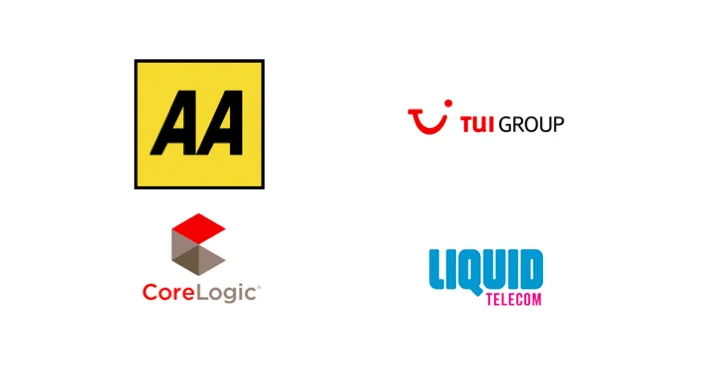Migration of TIBCO ActiveMatrix BusinessWorks 6 for Forward-Moving Integration
Blog: The Tibco Blog
It has been a busy year for the BusinessWorks team here at TIBCO and I wanted to catch you up on some of the major announcements made at TIBCO NOW 2016. But first let’s step back and see how we got here. As a lot you reading this blog would agree, this ain’t exactly our first integration rodeo!
- Mid-late 90s: While EAI was only getting defined, TIBCO Messaging and Message Broker brought the concept of a software bus architecture that allowed customers to manage data between discrete systems as messages coordinated by a central broker. Integration Manager and Adapters then let them create processes that coordinated the flow of information and converted data to formats required by various proprietary systems.
- Early -mid 2000s: With the scope of Integration requirements expanding, BusinessWorks introduced the concept of “integration-in-a-box” by bringing together all the valuable components into one unified user experience. It became the default tool to connect anything and everything, using widely accepted standards and popular transport protocols. BusinessWorks became the gold standard in the SOA days and used a combination of BusinessWorks with TIBCO Messaging as their ESB.
If there is one thing about Integration that we have learnt over the years, it is that change is the only thing constant. Right when SOA was settling down as the de-facto dominant paradigm, things got a lot more interesting with the arrival of cloud. BusinessWorks 6 was conceived as enabling that big transition into cloud-native architectures.
With this rich legacy and more than 2500 customers using BusinessWorks 5, we made the first version of our next-gen Enterprise Integration offering—BusinessWorks 6—generally available in February 2014. Just over two years later, it has seen adoption across all verticals and now runs mission-critical business for some of our marquee customers globally. Last week at TIBCO NOW, we shared some of these highlights:
- 300+ active Customers, including success stories shared at TIBCO NOW
- 3X adoption in 2015
- 35+ connectors engineered and supported by TIBCO
- Community edition plug-ins, contributed by the community
- 3 channels of consumption: enterprise integration, PaaS/cloud, and iPaaS.

From a product standpoint, we announced several major new features:
- API development
- E2E API journey: Build APIs in BusinessWorks 6 and push them in a seamless way to TIBCO Mashery for management and distribution.
- Swagger 2.0 compliance and support
- DevOps tooling:
- Open-source Apache Maven plugin available via public GitHub Repository
- Introduced unit-testing (assertion activities) capabilities with plans to expand the scope of such functionality
- Monitoring and management:
- Ecosystem:
- 35+ connectors including the newly introduced Community edition plugins
- Support for DataDirect drivers and ability to use custom JDBC and JMS drivers
- Security policies:
- Design-time policies for last-mile security
- Support for HTTP (Basic Auth, Credential Mapping) and SOAP (WSS Provider, WSS Consumer) policies
- Performance optimization:
- Improvements and controls in Validations
- Comprehensive performance and tuning guide
- Significant improvements in XML processing
- Support for handling larger XSDs
Beyond these functional improvements, one area that has received the utmost priority this year is strengthening our migration support for customers moving from BusinessWorks 5. As a brief side note, it’s important to clarify that BusinessWorks 5.x is not going away and continues to proceed along a path of required updates and fixes.
We have been pretty clear about this from Day Zero—BusinessWorks 6 is a next-generation transition that enables organizations to transition from SOA era into cloud and digital era. For “core” projects that run the business and “edge” projects that change the business, we fully expect customers to move at their chosen pace to adopt BusinessWorks 6.
This year, we have seen a 3X increase in organizations adopting BusinessWorks 6. In order to support this, we have tripled our R&D spend on migration tooling alone which allowed us to build some key migration-oriented features:
- Selective migration: allows the user to choose a subset of project resources to migrate and remaining to refactor
- Native support for BW5 concepts:
- Direct subprocess without WSDL
- Dynamic call process specifying process-name
- Error transitions
- Performance improvements
Between TIBCO ActiveMatrix BusinessWorks 6, TIBCO BusinessWorks Container Edition and TIBCO Cloud Integration, no project migration is needed and such projects, that use functionality common to all 3, can easily be ported from one edition to another.
Undertaking the journey of taking a much-loved product and re-architecting it for the new world was a very challenging task. However, the mainstream adoption of BusinessWorks 6, the numerous case studies of our production customers, and the overwhelmingly positive feedback received from our users last week have reassured us that BusinessWorks 6 has truly succeeded in occupying the position once held by BW5—that of the best-in-class integration solution for enterprises.